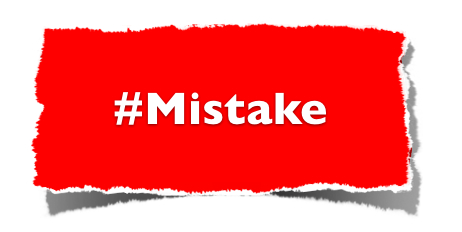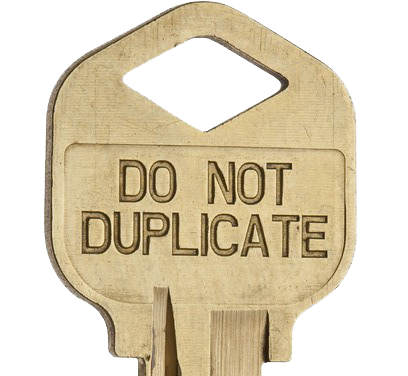7 Common Medical Billing Errors and How to Avoid Them
 Are you guilty of these common medical billing errors? Read on to learn what mistakes happen most frequently and how you or your practice can avoid them.
Are you guilty of these common medical billing errors? Read on to learn what mistakes happen most frequently and how you or your practice can avoid them.
An enraged patient is on the phone, overcharged for medical expenses. Sometimes the patient had been unaware of what their insurance company charges and what it doesn’t.
But sometimes the charges are due to medical billing errors.
Medical billing and coding errors have become more common and can be due to a lack of knowledge of the changing laws and regulations or changes in insurance coverages. They can also be due to human error or miscommunication.
The consequences can cost a medical practice thousands of dollars, not to mention the loss of relationships with patients.
Regardless of the cause, it’s important to know what the most common medical billing mistakes are and resolve them right away.
Read on to learn about the seven most common medical billing errors and how to avoid them.
1. Upcoding
When a medical practice charges a patient for a treatment that is more that is more severe or intensive than what the patient had, this is upcoding.
Upcoding is when the medical billing code does not represent the services the patient had and instead often represents a more-expensive treatment. For instance, the medical billing code could be for inpatient care when the code should have been for a regular office visit.
Sometimes upcoding occurs due to a lack of knowledge of the correct code for a treatment or procedure. But this medical billing error is also done as a way for a practitioner to charge more money, which is illegal.
If you suspect an upcoding error, check with the practitioner to confirm that the patient did receive this particular treatment before moving forward to billing.

2. Undercoding
When a practice charges a patient is for a treatment that is less severe or less extensive than what the patient had, this is undercoding. It is the opposite of upcoding, but still a medical billing coding error that can be illegal.
Again, sometimes this occurs due to not knowing the correct code. But sometimes a doctor is undercharging a patient to avoid an audit or to be sympathetic to a patient’s financial situation. In either case, it’s a precedent that you should avoid.
3. Miscoding
Another kind of medical billing error related to coding is miscoding. This is when the code does not at all represent the treatment or diagnosis that the patient received.
Often a single digit change means the difference between charging a patient for a colonoscopy versus a psychiatric exam, two very different things.
It’s always important to double-check that the coding matches the treatment and diagnosis. If you believe that a doctor made an error, it’s better to confirm with the doctor rather than moving forward.
This kind of medical billing error is more often unintentional and due to misconstruing the correct code.
4. Duplicate Billing
 When a practice bills a patient for a service or treatment more than once, this is a medical billing error.
When a practice bills a patient for a service or treatment more than once, this is a medical billing error.
This can happen when more than one doctor has confirmed the need for a medication, for instance. This happens often when a patient is in the hospital and there are multiple doctors and nurses providing treatment throughout a patient’s stay.
Duplicate billing in healthcare is one of the most common types of errors and is often overlooked.
Check over a patient’s codes and make note of any ones that are multiples to confirm that they are accurate.
5. Unbundling
When a practice inputs billing codes separately when they should be under a single code, unbundling occurs.
The separate charges will be much higher than if these procedures are treated as a unit. An example is when a patient has bloodwork done and the test is a panel, but instead, it is broken down into individual tests.
Keep an eye out for single tests or treatments that should be billed as one code.
6. Incorrect Patient Information
Spelling a patient’s name wrong, inputting the wrong birthdate, or using the incorrect insurance ID number can all result in a claim being rejected by an insurance company.
When an insurance company rejects a claim, the full amount of the claim will be charged to the patient and result in a much larger bill.
Sometimes a medical billing error happens when the provider doesn’t give the coder correct information about a patient’s diagnosis. If the wrong medical billing code occurs, then the insurance company might deny the claim due to lack of medical necessity.
It just takes one person to make a mistake when entering information. There is a huge chance that everyone after that will continue to make the same error.
7. Insurance Error
There are a number of other problems that can happen when submitting a claim to a patient’s insurance.
Among the top is not verifying a patient’s insurance coverage. It’s your responsibility to check with the patient about any changes that have been made with their insurance each and every visit.
You also need to check if a patient has more than one insurance. This can happen if a patient has their own insurance and then one covered by their employer. Or a child can be covered by each divorced parent.
There are many reasons why a person might have primary or secondary insurance coverage, and it’s the billing agent’s responsibility to confirm coverage and know which company to charge first.
In addition, the kinds of coverage that an insurance company has can change. It’s important to stay up-to-date with insurance coverage changes each year for all insurance companies that your practice works with.
How to Avoid Medical Billing Errors
The medical billing errors listed above happen on a regular basis. If you know what to look out for, these errors can be avoided.
Pay attention to the details and verify any multiple codes or irregular codes that you suspect may be made in error. Double-check the spelling of a patient’s name, and also all other personal information.
Always confirm a patient’s insurance information with each visit. Also, requirements of the insurance company, such as preauthorization of treatments and specialist. You should be aware of co-pays, deductibles, maximum coverage and limitations on visits too.
Also, stay informed about the latest laws and government regulations.
Taking these important steps may not prevent all billing mistakes, but you will avoid many. It’ll lead to a responsible medical practice and positive relationships with patients.
For more articles about being in the know in regards to medical billing, visit our blog.
Author: Mike Cynar
Mike Cynar brings buyers and sellers together by producing reviews and creating non biased webpages allowing users to share their experiences on various products and services. He and his staff write informative articles related to the medical field, legal, and other small business industries.

Leave a Reply